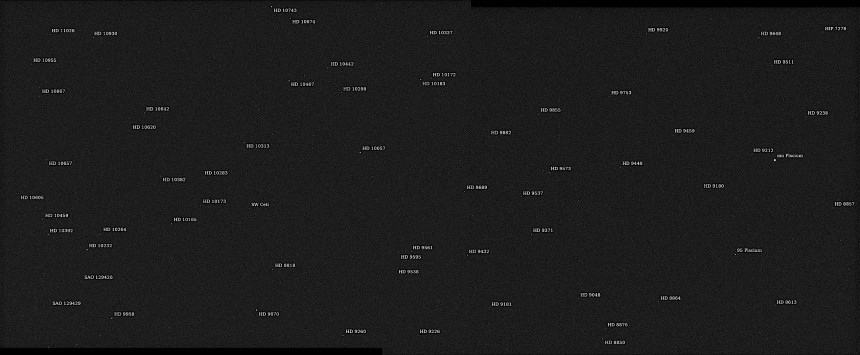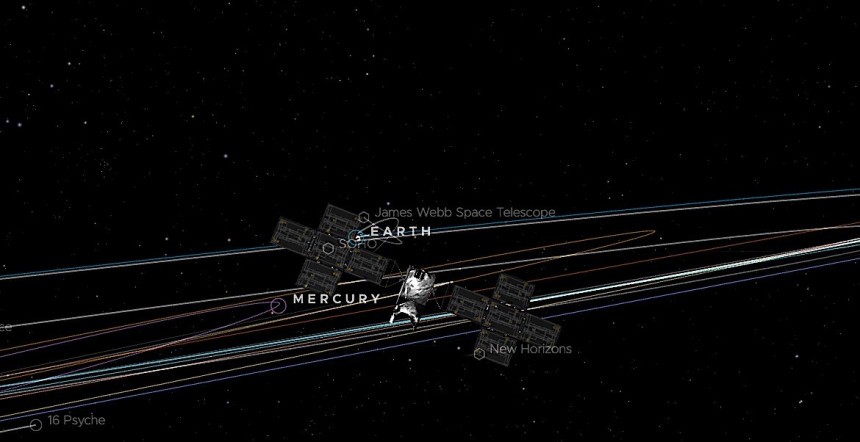Somewhere in the vastness of space a relatively large asteroid called Psyche is floating with no apparent goal. Its 64,000 square miles (165,000 square km) surface area, akin to an exposed nickel-iron planet core, is probably deserted and lifeless, and it was never looked up by a sentient species' eyes. That will change though went a mission launched from Earth reaches it in 2029.
Named after the asteroid itself, the Psyche spacecraft left our planet on October 13, setting course for the piece of rock that may shed an entirely new and exciting light into how the planets of our solar system were born, but also into what may lie at their core.
As most of you already know, launching a mission to such a faraway place (the asteroid is at a distance of up to 309 million miles/ 497 million from the Sun) isn’t only about the excitement of departure and the thrills of arrival. For mission controllers, the time between the two important moments is extremely busy, as systems need to be powered on, tested, and prepared for their actual mission.
As you're reading this Psyche the spacecraft is at a distance of over 16 million miles (26 million km) from our planet, and a lot has been done already in the eight weeks that have passed since launch.
The mission's handlers powered on the ship's scientific instruments, tested a laser communication system that may change the way Earth talks to its deep-space hardware, and enabled the magnetometer that will measure the asteroid's magnetic field hoping to get a reading that'll point to it having been a building block of an early planet.
We've already discussed the ship's use of the laser communications system, which for all intents and purposes set the record for sending and receiving optical data from well beyond the Moon.
More specifically, Psyche shot a laser beam at our planet from a distance of 10 million miles (16 million km), and receivers here on Earth were able to catch it.
As of the beginning of this month, the ship also achieved something called first light. In rocket scientists' slang that's the activation of the ship's cameras, the opening of its eyes if you will. The hardware was turned on on December 4, and was even able to send back the things it saw in its immediate surroundings.
You can find the first-ever Psyche photo right under the title of this piece, the result of a mosaic compiled from no less than 68 images snapped by the spacecraft's cameras – a pair of them, called Imager A and B.
Don't do squinting, though, as there's not much to look at except for the occasional dots of light surrounded by utter darkness.
Those dots of light are stars shining from the constellation Pisces and we're seeing them from closer than ever before not thanks to some carefully choreographed plan, but simply because that's where the camera was pointing when it was turned on.
The brightest star there is the solitary, orange-hue mu Piscium (or mu Pisces) located at some 340 light years from our planet. The rest of the stars, too many to count, have been highlighted by NASA in a revised version of the image (check the image above to have a look at them all).
The team supporting the mission is not using these images solely to get a sense of how the cameras work, but also to verify commanding, conduct telemetry analysis, and calibrate the imagers for future use.
The cameras will continue to work, but it won't be until 2026 that the first real exciting results of this work will reach us. That's when Psyche will pass by Mars. Then, again, nothing exciting will happen until the spacecraft reaches the asteroid - unless some kind of alien ship doesn't unexpectedly pop into view.
For both the images already taken and the ones that will be snapped, especially when the spaceship reaches its target, the cameras will use different wavelengths of light, some of which are not visible to the human eye. The asteroid will be mapped with the help of the imagers, and a 3D layout of it will be created in the hope that we'll get a better understanding of its geology.
Separately from all of the above, the Psyche spacecraft even set a sort of record during its so far short mission to space. At the beginning of November two of the four electric propulsion thrusters were fired up, marking the first time ever when a means of propulsion called Hall-effect thrusters was used in deep space, meaning beyond the orbit of the Moon.
Hall-effect thrusters work by shooting out ions of xenon gas, and in the case of the Psyche, they're meant to both drive it to its target and help it maneuver once it makes orbit.
As most of you already know, launching a mission to such a faraway place (the asteroid is at a distance of up to 309 million miles/ 497 million from the Sun) isn’t only about the excitement of departure and the thrills of arrival. For mission controllers, the time between the two important moments is extremely busy, as systems need to be powered on, tested, and prepared for their actual mission.
As you're reading this Psyche the spacecraft is at a distance of over 16 million miles (26 million km) from our planet, and a lot has been done already in the eight weeks that have passed since launch.
The mission's handlers powered on the ship's scientific instruments, tested a laser communication system that may change the way Earth talks to its deep-space hardware, and enabled the magnetometer that will measure the asteroid's magnetic field hoping to get a reading that'll point to it having been a building block of an early planet.
We've already discussed the ship's use of the laser communications system, which for all intents and purposes set the record for sending and receiving optical data from well beyond the Moon.
More specifically, Psyche shot a laser beam at our planet from a distance of 10 million miles (16 million km), and receivers here on Earth were able to catch it.
You can find the first-ever Psyche photo right under the title of this piece, the result of a mosaic compiled from no less than 68 images snapped by the spacecraft's cameras – a pair of them, called Imager A and B.
Don't do squinting, though, as there's not much to look at except for the occasional dots of light surrounded by utter darkness.
Those dots of light are stars shining from the constellation Pisces and we're seeing them from closer than ever before not thanks to some carefully choreographed plan, but simply because that's where the camera was pointing when it was turned on.
The brightest star there is the solitary, orange-hue mu Piscium (or mu Pisces) located at some 340 light years from our planet. The rest of the stars, too many to count, have been highlighted by NASA in a revised version of the image (check the image above to have a look at them all).
The team supporting the mission is not using these images solely to get a sense of how the cameras work, but also to verify commanding, conduct telemetry analysis, and calibrate the imagers for future use.
For both the images already taken and the ones that will be snapped, especially when the spaceship reaches its target, the cameras will use different wavelengths of light, some of which are not visible to the human eye. The asteroid will be mapped with the help of the imagers, and a 3D layout of it will be created in the hope that we'll get a better understanding of its geology.
Separately from all of the above, the Psyche spacecraft even set a sort of record during its so far short mission to space. At the beginning of November two of the four electric propulsion thrusters were fired up, marking the first time ever when a means of propulsion called Hall-effect thrusters was used in deep space, meaning beyond the orbit of the Moon.
Hall-effect thrusters work by shooting out ions of xenon gas, and in the case of the Psyche, they're meant to both drive it to its target and help it maneuver once it makes orbit.










